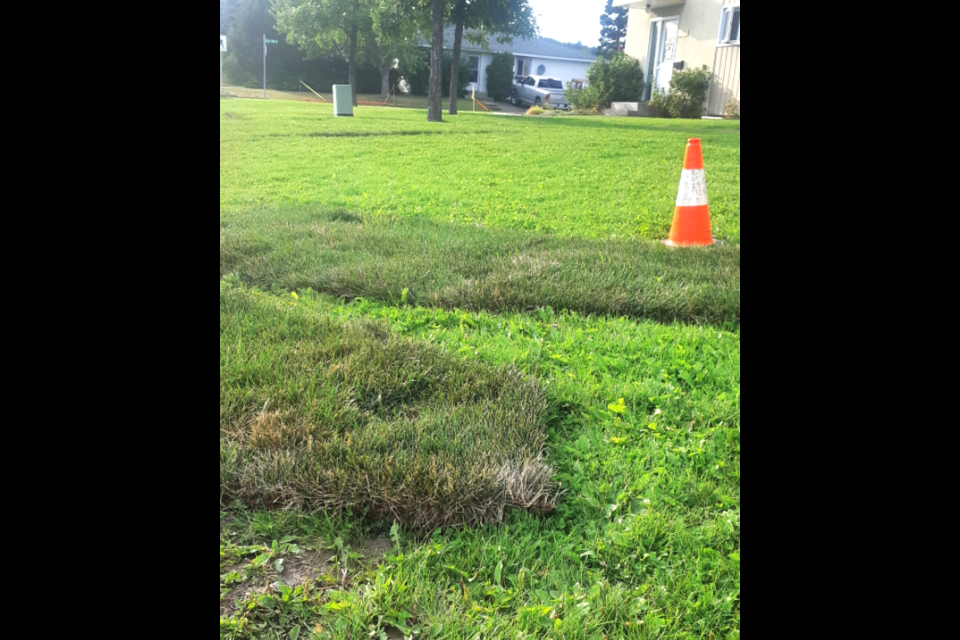Replace your divots.
That advice doesn’t only apply to golfers who dig a little too deep into the grass when they take a wayward swing with their club.
It’s also one of the obligations construction crews have to live up to when they dig into lawns on city or private property to access underground utilities or complete road work projects.
Residents of the Heritage subdivision on First Avenue between Tabor Boulevard and Foothills Boulevard got a rude awakening last week when they discovered patches of dirt dug up a few weeks ago on both sides of the street to access power lines and replace streetlight poles have been covered over by rolls of sod laid too high to meet the existing undisturbed sections of lawn.
The shoddy sod job left dozens of patches of lawn along the road that will have to be dug up and levelled to restore the lawns to their original state with still more holes in lawns yet to be filled over the next eight weeks as the city works to replace 37 light standards.
“The contractor who is working on this and installed the sod will be back and he will fix any uneven ground, and make sure everything is more level,” said city communications officer Mike Kellett. “There are another four to eight weeks left in this project so I would encourage some level of patience.
“The running instructions to the contractor were to replace that sod, which could be replacing it on bare dirt to another type of lawn. So the contractor has put the sod down and expects it to grow in the coming weeks as the project progresses and those pieces that are still not looking up to snuff will be addressed in a few weeks.”
But according to Reid Lake Valley Turf owner Stanley Kocaj, that’s the wrong way to replace sod and will only create unnecessary work to complete the job.
“They should cut everything down to the grade level and lay the sod properly, not like that,” said Kocaj. “They should cut it in, just like they do highway pavement. They should drop the level and match the sod level with the existing old sod. That is the proper way to do it and in two weeks you should not see the fill, everything will grow together even.
“You should never lay sod above the old sod,” he said. “That patch always will dry out quicker. If somebody cuts it at that higher level it will probably catch with the mower every time.”
Kellett said a letter was sent to the affected residents on Aug. 10 to inform them they are exempt from the city’s watering restrictions as of Aug. 23 which will allow residents to water the new sod every day to give it a better chance to take root.
The problem with disturbing the soil again and delaying the sod’s ultimate resting place is the grass plant will expend energy putting out new roots and then will have to be uprooted when the contractor returns to make the ground level, which will diminish the nutrients of the sod and could lessen its chances of surviving the winter.
“When you roll it back again you start breaking the roots off,” said Kocaj. “it’s a disturbing shock and it could get yellow and it will get weaker. In my opinion, they should not do it that way.”
Some First Avenue residents have taken it upon themselves to peel back the sod and dig out some of the earth underneath so that it meets the existing lawn.
The project is the start of a multi-year operation to replace aging and failing streetlights all over the city and replace them with more energy-efficient LED lights, which will improve lighting, especially at intersections. The city estimates 1,000 of its 4,700 streetlights are at the end of their service life and will need to be replaced. Most of the existing streetlights were installed in the 1970s and no longer meet city standards or electric code practices.
The $699,995 project was awarded to R.G.M. Contracting of Edmonton, who hired a subcontractor to carry out the sod replacement. The project will also create wheelchair ramps on street corners and improve curbs, gutters and sidewalks.



